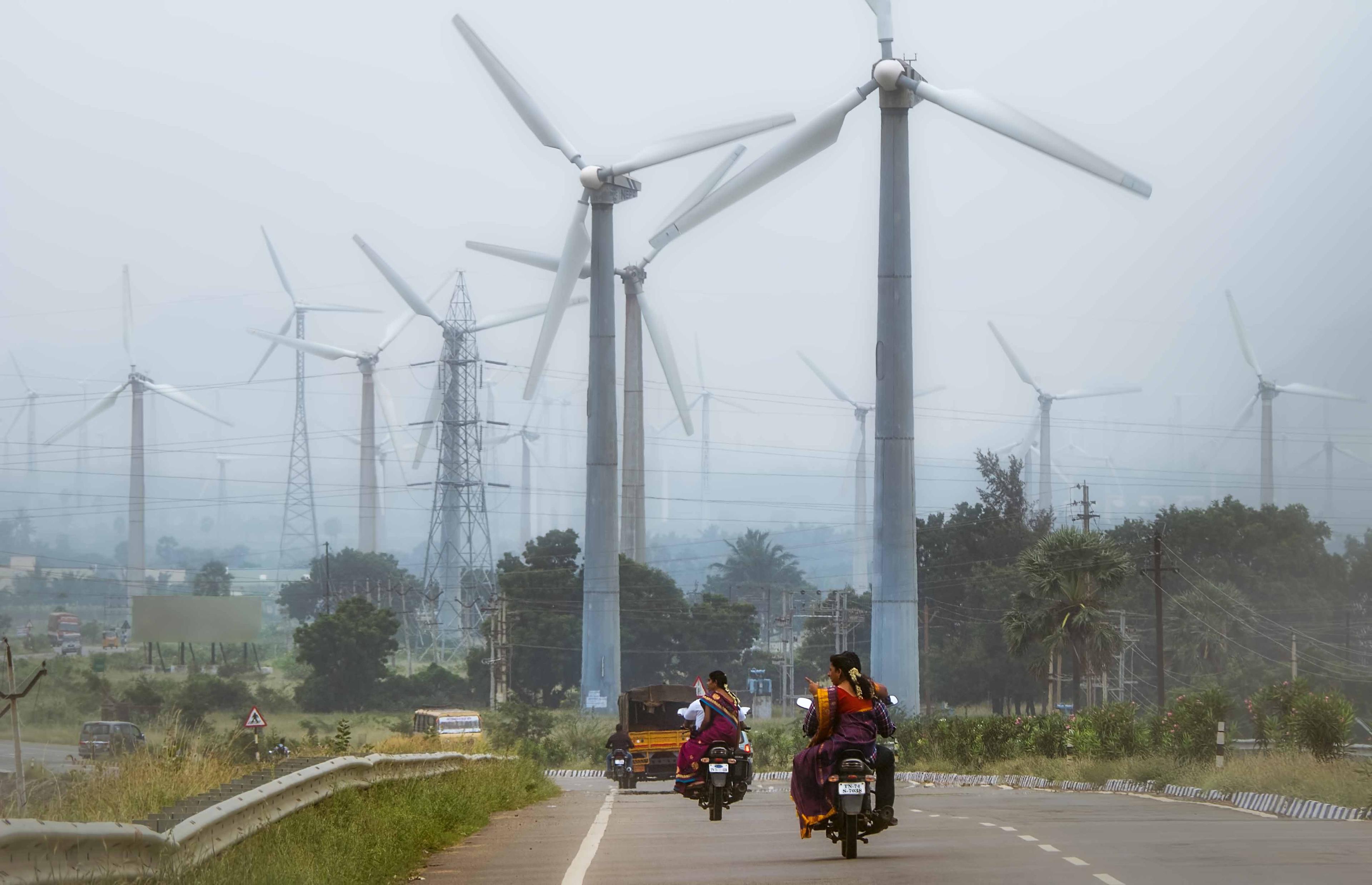Blog
The promise of a carbon tax and the threat of corruption

COP26 just got under way. In the run-up to the Glasgow meeting, the United Nations have issued some preliminary reports as to where countries’ climate ambitions stand. The findings paint a bleak future: emissions are projected to rise by 16% by 2030, which would see an average temperature increase of 2.7°C relative to pre-industrial levels by the end of the century. With such a grim scenario – and considering the bottlenecks in climate finance from developed countries pledged in Paris in 2015 – countries need to revise their commitments up. Many jurisdictions are considering how imposing a tax on carbon emissions would help them achieve their goals. Corruption can hinder efforts to adopt and set such a tax in motion.
A carbon tax is ‘the jewel in the crown’ for decarbonisation. Ask an economist, an environmental activist, or a development practitioner, and most will tell you that putting a price on carbon emissions is the most cost-effective way to reduce them. It stimulates entire economies towards alternative energy sources and speeds the adoption of low-carbon technologies. Hence, it comes as no surprise that, since its inception in the early ’90s, carbon taxation has become a global mainstream policy instrument, praised by representatives from dissimilar sectors and implemented both at federal and sub-national levels.
And yet, it is estimated that only a quarter of global CO2 emissions are currently taxed by any sort of carbon pricing mechanism. Among the likely reasons behind the shortfall of carbon pricing instruments, corruption could take centre stage.
Various forms of corruption stand in the way
A forthcoming U4 Brief, produced in collaboration with Climate Focus, unpacks the extent of corruption risks in carbon taxation at various stages of the policy cycle, be it adoption, implementation, or evaluation. The report uses a corruption risk matrix to uncover several key enabling factors for corrupt acts, including bribery, conflicts of interest, opacity, revolving door, and embezzlement. A caveat at this point: corruption risks will be higher in countries whose tax administration systems are already rife with public misconduct, so carbon taxes can even prompt more corruption in these countries.
From the outset, the playing field is not level. As early as the adoption phase, numerous powerful special interests begin to seek favourable treatment, such as a tailor-made carbon tax, bypassing legislation or even making sure they are completely untouched by the tax. These groups include high emitters, lobby groups, corporations, auditors and businessmen-turned-politicians.
Through unequal lobbying some stakeholders might be overrepresented at closed-door discussions, exerting undue influence and overshadowing others’ legitimate stances. An extreme yet common mode of corruption at this point can take the form of bribery in exchange for government concessions. Examples of just this kind of exchange can be found in the research on fossil fuel subsidy reform, which posits that countries that control corruption are better positioned to eliminate subsidies. Strikingly, undue influence can also flow through lawful avenues, rendering corruption detection all the more challenging. For instance, large oil and gas firms have been found to transfer vast political donations to influence top public executives and advance regulatory capture.
Conflicts of interest pose yet another major challenge to carbon taxation. It is expected that office-holders arrive at their decisions independently, and above all, that those decisions serve the public interest. However, when a public official struggles to separate their private interests from those inherent to public office, any move can slide into corrupt behaviour. Conflicts of interest go hand-in-hand with the so-called ‘revolving door’ phenomenon: the seemingly free movement of individuals between top posts in the public sector and business, overlooking regulations to declare potential conflicts of interest (an instance here). Left unchecked, it blurs the line that separates public office and profit-seeking.
Conflicts of interest are thought to contribute to Indonesia’s weak carbon tax regime. The government’s carbon tax, long opposed by businesspeople-turned-politicians, is set at just US$2 per tonne of CO2. This will have a negligible effect on emissions. For comparison, the IMF says that a global carbon price must reach US$75 by 2030 to be consistent with a 2°C-warming scenario. Countries need to address corruption — and be perceived to do so — to accelerate the adoption of a stable, credible tax rate.
It all comes down to climate justice
Pigouvian taxes, of which carbon taxes are a part, are primarily imposed to change behaviour rather than raise revenue. However, carbon taxation has proven a great catalyst for domestic climate finance. Revenue raised can serve several purposes:
- To finance mitigation and adaptation measures addressing inequitable impacts of the instrument on low-income groups
- To provide rebates to energy-intensive, trade-exposed firms
- To reduce existing taxes
- To supplement general revenue.
Effective administrative performance is key to preventing corrupt acts in tax administration, such as embezzlement and bribery. Prior research has argued that the gap between actual carbon pricing and the fee required to meet ambitious climate goals can be narrowed by increasing public acceptability, for instance through proper use of any revenue generated. It is possible to ensure that the benefits are concentrated on the less well-off and costs are decentralised. If fee increases appear illegitimate to the public (for example, taxpayers will not tolerate money ending up in polluters’ pockets) it is likely that the fees will be resisted.
What needs to be done?
The following list illustrates some measures that governments, donor agencies, civil society, and concerned industries can take to address corruption in carbon taxation:
- Introduce transparency measures across the policy cycle.
Keep records of all stakeholder engagement, lobbying activities, the concerned actors, and their positions. Make emissions and verification reports, as well as records of fuel sales, tax liabilities, and rebates available to the public. - Level the playing field.
Formulate rules governing who can participate in the policymaking process, from stakeholders to the public. There should be clarity as to how the input of stakeholders is considered in policymaking and how it is weighted against further legitimate interests. - Introduce rules to manage conflicts of interest.
Introduce waiting periods before taking public office for those previously overseeing business with a direct implication for carbon taxation (emitters, audit companies, lobby groups). Similarly, regulate the role of those who have recently left government as lobbyists, brokers, or advisors to businesses on matters related to carbon taxation. Enforce and oversee declarations of conflicts of interest. - Adopt smart policy design.
Conduct institutional capacity and corruption risks assessments as the basis of carbon tax designs. If corruption stems from broader governance shortcomings, consider building the carbon tax upon existing systems for collecting fuel taxes. Ensure regulations are clear and apply uniform tax rates. - Ensure tax authorities are trained and properly funded.
Provide training sessions targeted at identifying, addressing, and prosecuting corruption issues. Fund tax authorities adequately to ensure proper tax administration and prevent irregularities. - Follow strict open public procurement processes.
Ensure fair competition among bidders and limit the potential for cronyism and nepotism.
Carbon taxes are a vital tool
As countries aim to show up in Glasgow with credible, feasible climate commitments, carbon taxation will top the list of pledges made to reduce emissions and scale back the speed of global warming. A carbon tax can indeed be effective to reach such goals: not only can it boost the green transition, but also mobilise domestic finance to accelerate decarbonisation, which the United Nations deems the greatest challenge of our time.
We must ensure that corruption does not turn the jewel in the crown from emerald green to dark grey.
Disclaimer
All views in this text are the author(s)’, and may differ from the U4 partner agencies’ policies.
This work is licenced under a Creative Commons Attribution-NonCommercial-NoDerivatives 4.0 International licence (CC BY-NC-ND 4.0)


